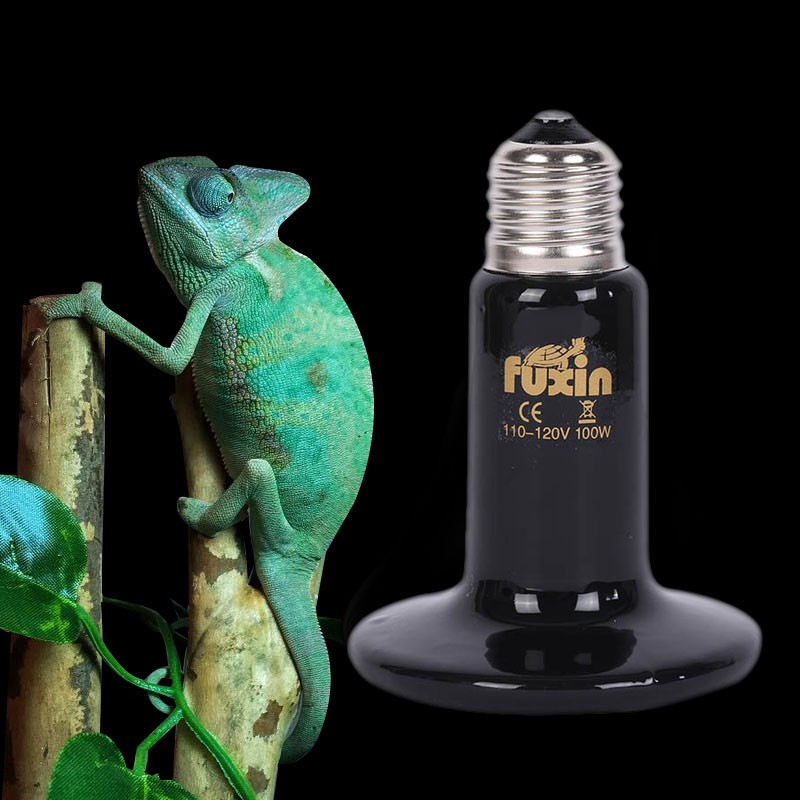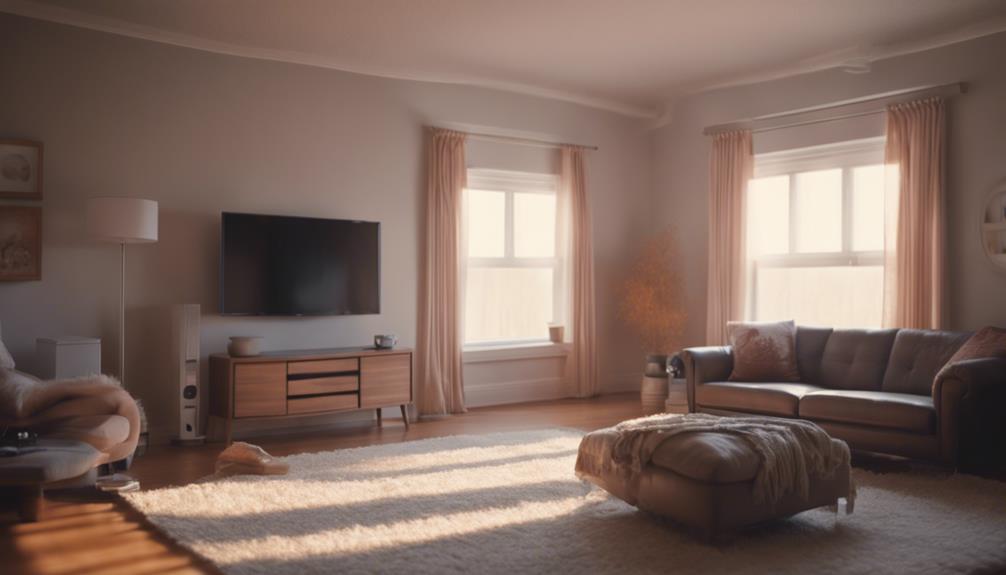
Position your infrared heater at 5-6 feet above the ground for ideal heat distribution in the room, making certain it's centrally located for even coverage. Consider using multiple heaters in larger spaces. Regularly clean with a soft, dry cloth or vacuum to prevent airflow blockages, focusing on vents and grilles. Check and replace air filters every 3 to 6 months, especially in dusty environments, for energy efficiency. Inspect insulation for gaps and damage and confirm proper ventilation to avoid gas buildup. Set thermostat temperatures accurately and consider smart thermostats for energy-saving features. Remember, annual professional maintenance can identify and prevent issues for peak performance.
Proper Placement for Optimal Performance
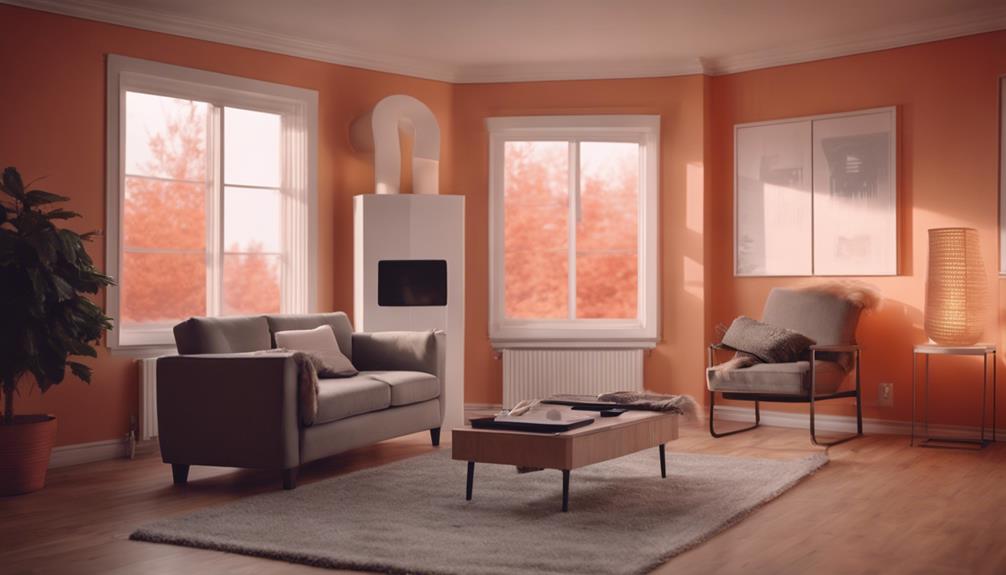
Position your infrared heater at a height of 5-6 feet above the ground level for ideal performance and efficient heat distribution. This angle positioning allows the infrared heat waves to cover a broader area, guaranteeing optimal warmth in your space.
When considering room size, it's vital to place the heater in a central location to evenly distribute heat. For smaller rooms, a single heater may suffice, while larger areas might benefit from multiple units strategically placed to maximize coverage.
To determine the best placement, consider the layout of the room and potential obstacles that could obstruct the heat flow. Avoid positioning the heater directly above furniture or near curtains that could block the infrared waves.
Additionally, make sure there's ample space around the heater for proper ventilation and safety measures.
Regular Dusting and Cleaning Schedule
Maintain the efficiency of your infrared heater by implementing a regular dusting and cleaning schedule to guarantee peak performance.
Dust accumulation on the heating elements can hinder the heater's ability to emit heat effectively, reducing its overall efficiency. To combat this, use a soft, dry cloth or a vacuum cleaner with a brush attachment to gently remove dust and debris from the surface of the heater.
Be sure to unplug the heater and let it cool down before cleaning to avoid any accidents.
For more stubborn dirt or residue, dampen the cloth slightly with water or a mild cleaning solution specifically designed for electronics. Avoid using harsh chemicals or abrasive materials that could damage the heater.
Pay close attention to vents and grilles where dust tends to build up, as blockages in these areas can impede airflow and reduce the heater's performance.
Check and Replace Air Filters
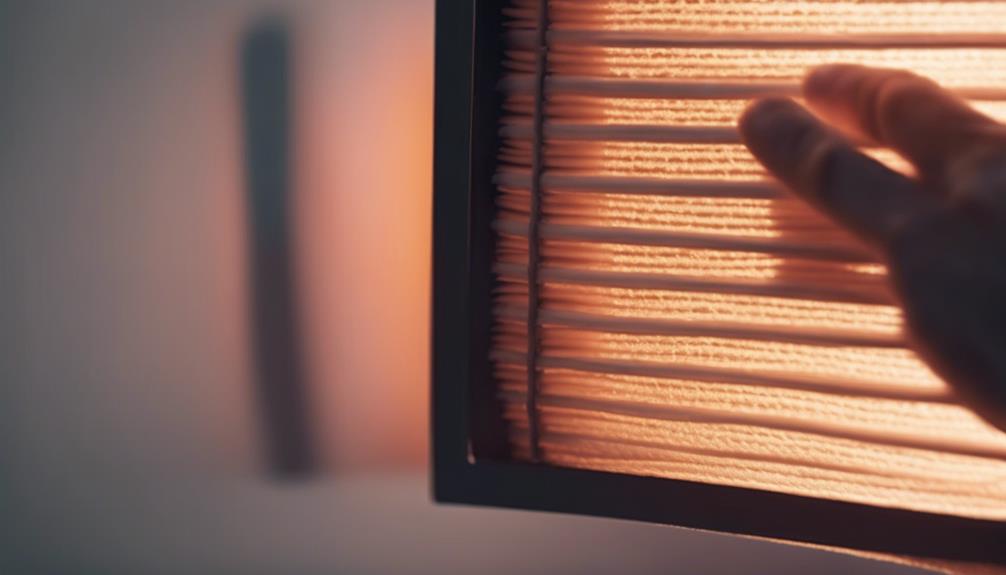
To guarantee peak performance of your infrared heater, regularly check and replace air filters as part of your maintenance routine. Air filters play a vital role in making sure that your heater functions efficiently by trapping dust, debris, and other particles that can obstruct airflow.
There are different filter types available, including fiberglass, pleated, electrostatic, and HEPA filters. Fiberglass filters are cost-effective but need to be replaced more frequently, while HEPA filters provide high filtration but may lead to reduced airflow if not changed regularly.
Maintenance frequency for air filters varies depending on the type and usage of your infrared heater. As a general rule of thumb, it's recommended to inspect your filters monthly and replace them every 3 to 6 months.
However, if you use your heater frequently or if you live in a dusty environment, more frequent checks and replacements may be necessary to optimize your heater's efficiency.
Checking and replacing air filters guarantees that your infrared heater operates at its best, consuming less energy and providing consistent warmth.
Inspect and Repair Insulation
Inspecting and repairing insulation is essential for ensuring ideal heat retention and energy efficiency in your infrared heater system.
Proper insulation materials play a vital role in preventing heat loss and maintaining a consistent temperature within your space. When inspecting your insulation, look for any signs of wear, damage, or gaps that could lead to thermal bridging, where heat escapes through unprotected areas. Common insulation materials include fiberglass, foam board, and reflective barriers, each with its own benefits in reducing heat transfer.
To repair insulation, start by sealing any gaps or cracks with appropriate insulation materials to prevent heat leakage. Additionally, consider upgrading to higher R-value insulation for better thermal performance.
Properly installed and well-maintained insulation will help optimize the efficiency of your infrared heater system by minimizing heat loss and reducing energy consumption. By addressing insulation issues promptly, you can enjoy a more comfortable and cost-effective heating experience.
Ensure Proper Ventilation
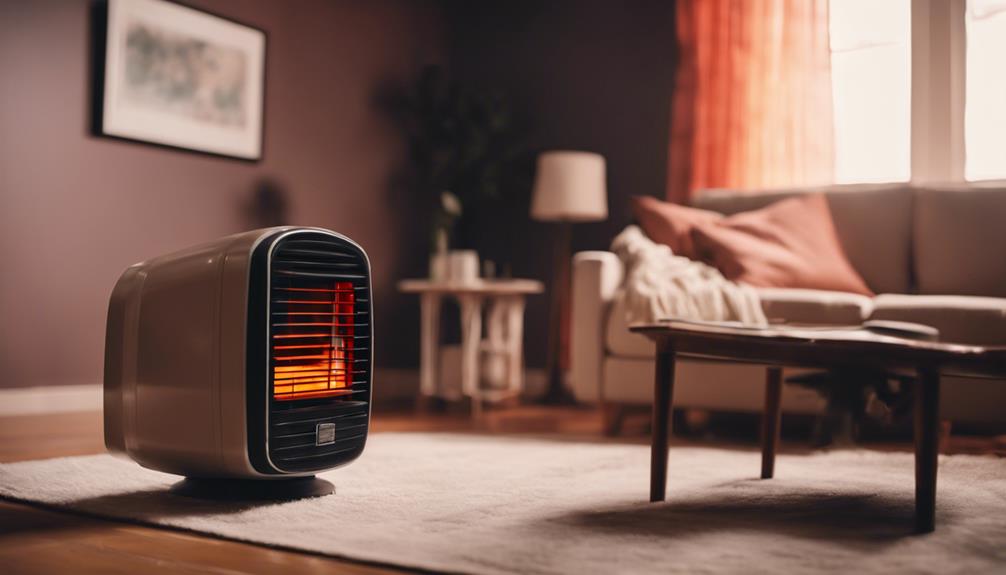
Proper ventilation is essential for maximizing the efficiency of your infrared heater system.
When using an infrared heater, ensuring adequate airflow dynamics is vital to maintain peak performance. Poor ventilation can lead to the buildup of harmful gas emissions like carbon monoxide, posing serious health risks. To prevent this, make sure the area where the heater is placed has proper ventilation, allowing fresh air to circulate and carry away any combustion byproducts.
To enhance ventilation, consider installing vents or fans to facilitate air movement. Positioning the heater near a window or doorway can also help promote better airflow.
Regularly check for obstructions such as furniture or curtains blocking airflow around the heater. Maintaining clear pathways for air circulation will improve the heater's efficiency and prevent the accumulation of gases indoors.
Monitor Thermostat Settings
Regularly adjusting the thermostat settings on your infrared heater is essential for enhancing its efficiency and ensuring peak performance.
Smart thermostats offer advanced energy-saving features that can help optimize your heater's operation. These thermostats allow you to set precise temperatures and schedules, ensuring that your heater only runs when needed.
Smart thermostats can learn your heating preferences over time, automatically adjusting settings to maximize comfort while minimizing energy consumption. Some models even offer remote access through smartphone apps, allowing you to control your heater from anywhere.
By utilizing the energy-saving features of smart thermostats, you can reduce your heating costs and environmental impact. Setting lower temperatures when you're away or asleep and gradually increasing them when needed can make a significant difference in your overall energy usage.
Monitoring and adjusting your infrared heater's thermostat settings regularly, especially with the help of smart thermostats, can lead to substantial energy savings and improved efficiency in your heating system.
Schedule Professional Maintenance Annually
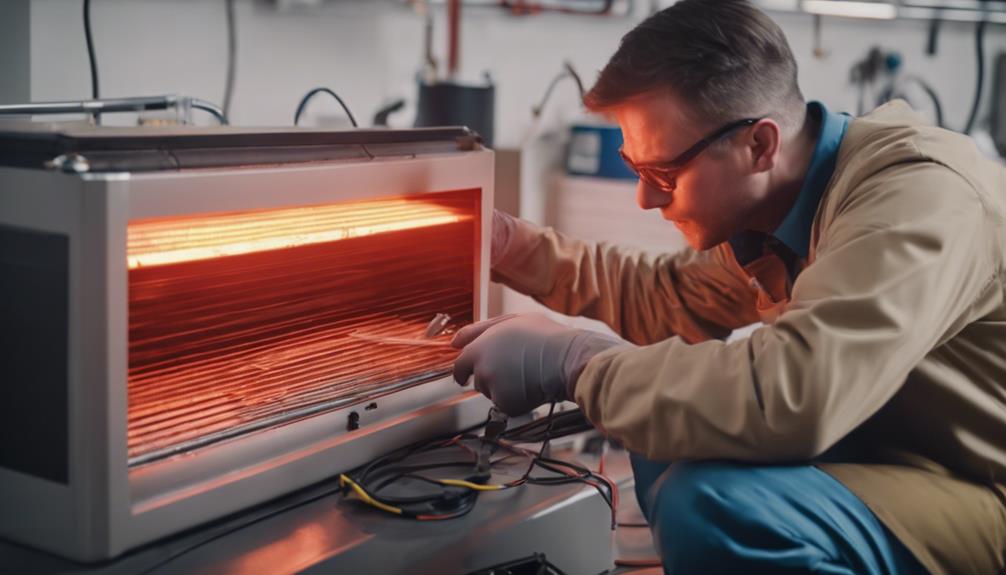
How can you guarantee peak performance and longevity for your infrared heater?
Scheduling annual professional maintenance is essential in confirming the energy efficiency of your heating system and minimizing heating costs.
Professional technicians can inspect your infrared heater thoroughly, identifying any potential issues before they escalate, thereby optimizing its performance.
During annual maintenance, technicians will clean the heating elements, confirming they operate efficiently and effectively.
They'll also inspect the wiring and connections, tighten any loose components, and lubricate moving parts to prevent unnecessary wear and tear.
Additionally, professionals will check the thermostat calibration to verify accurate temperature control, which can contribute to energy efficiency and reduced heating costs over time.
Conclusion
To maximize your infrared heater efficiency, follow these tips:
Place it in an ideal location.
Clean it regularly.
Change air filters as needed.
Inspect and repair insulation.
Guarantee proper ventilation.
Monitor thermostat settings.
Schedule annual professional maintenance.
By taking these steps, you can guarantee that your infrared heater is running at its peak performance and providing you with the most efficient heating possible.
